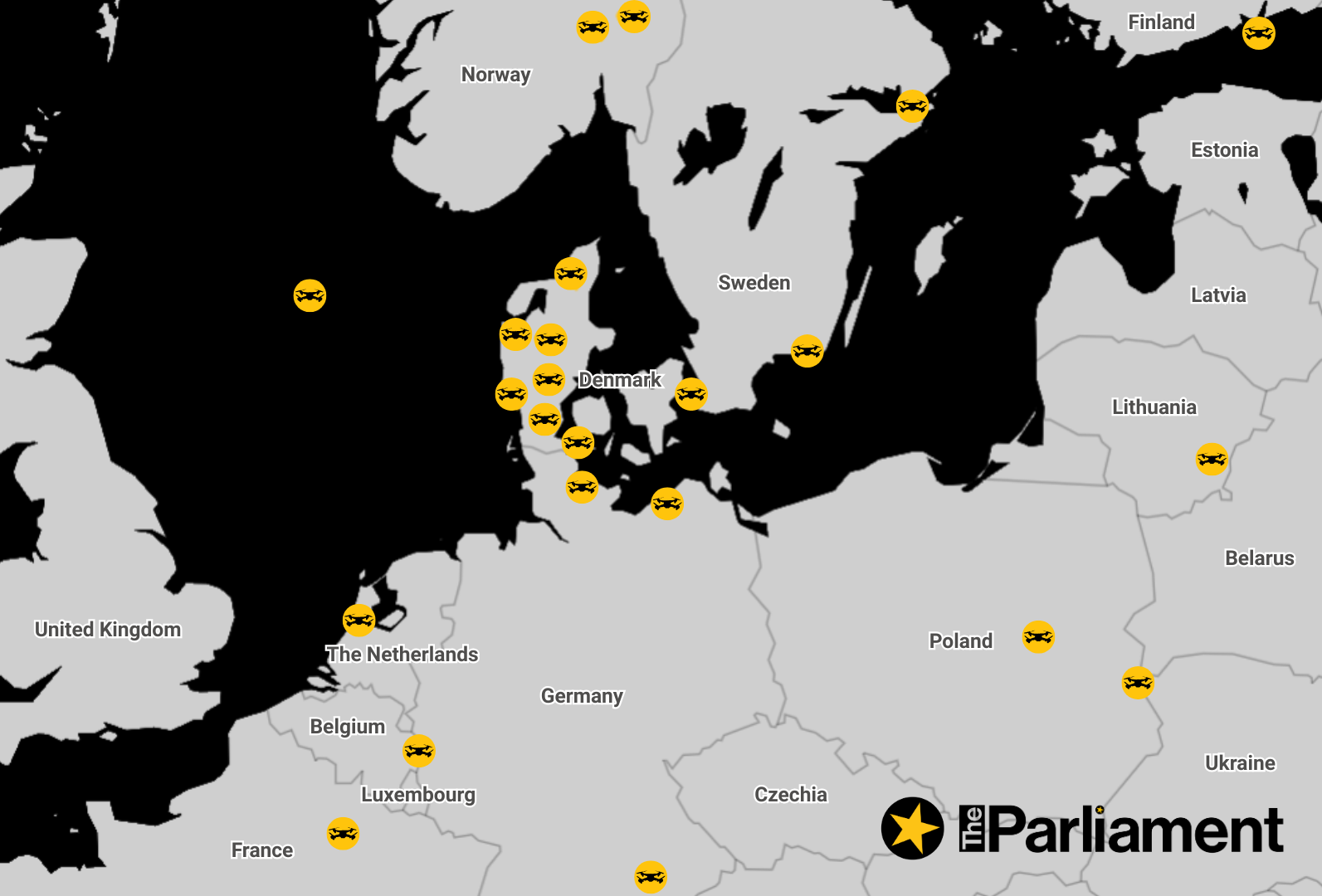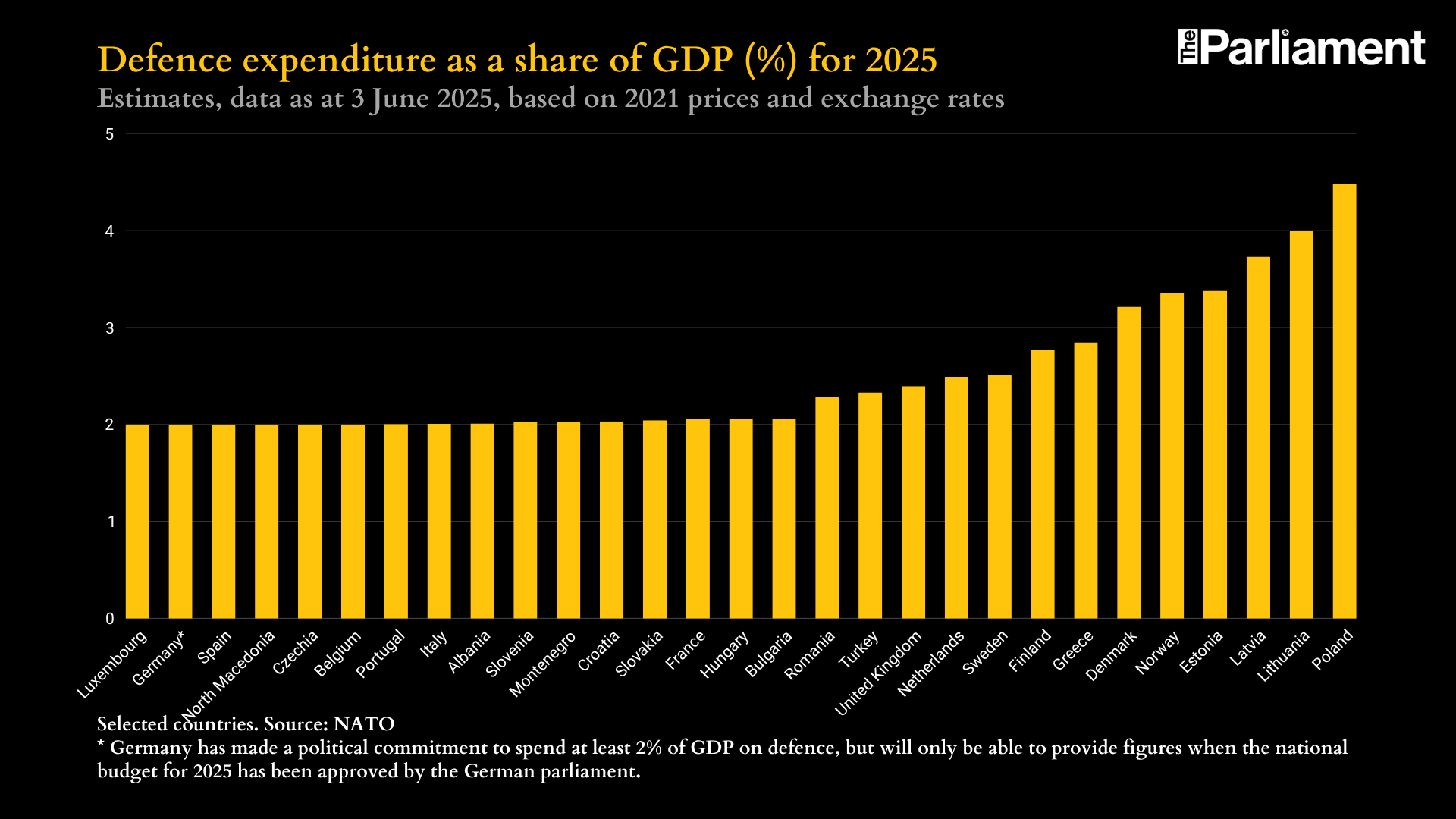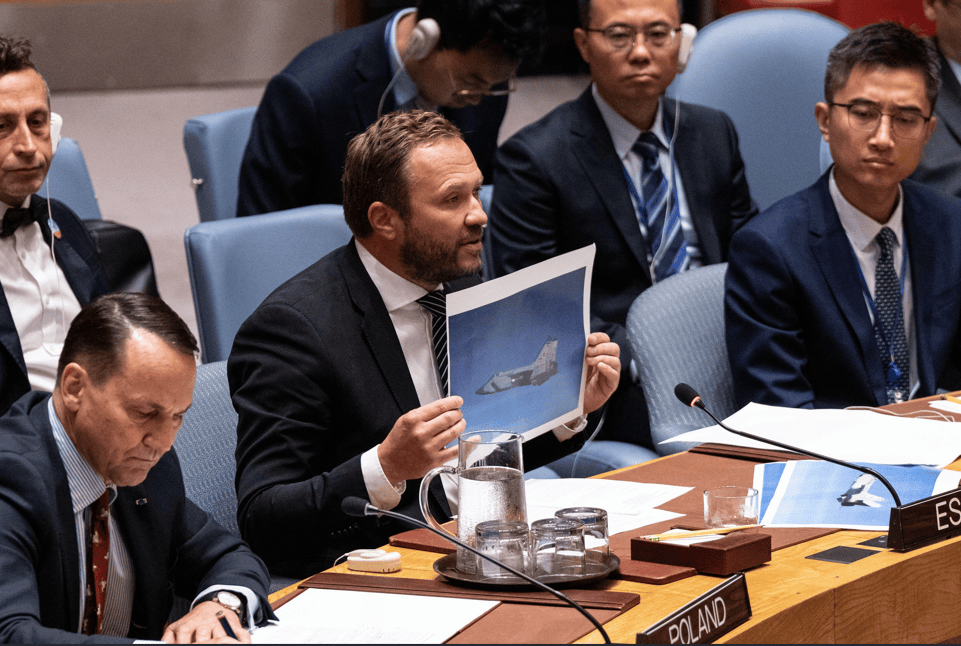NATO allies are facing their most direct challenge in decades as Russia intensifies a sophisticated drone campaign along Europe’s northern and eastern flank.
In recent weeks, unmanned aircraft — widely believed to be Kremlin-directed — have crossed into NATO airspace from Poland to Norway. In response, NATO defence ministers met in Brussels last week to grapple with the threat for the first time since the violations began. Hanging over the talks: a Russia newly emboldened to probe Western unity, and a Unites States increasingly impatient for its allies to step up.
“Russia is steadily escalating attempts to pressure Europe through air incursions, whether it is in Poland or Estonia ... Some people say it is a means of interrogation in European countries to try to persuade them not to back Ukraine,” Keir Giles, senior consulting fellow of the Russia and Eurasia Programme at Chatham House told The Parliament.
In comments made to The Times back in June, Bruno Kahl, the outgoing head of Germany’s federal intelligence service (BND), anticipated Russia’s move to test NATO’s article 5 guarantee. “The other explanation that has been needed is that this is Russia testing out means of immobilising Europe in the face of an overt military move against the European country,” he said.
Now, with drone sightings stretching from the Baltic to the Black Sea, what began as isolated incidents is rapidly becoming a continent-wide test.
 In the last months, airspace violations have stretched from Poland and Lithuania to Denmark and Romania, underscoring growing pressure along NATO’s eastern and northern flanks.
In the last months, airspace violations have stretched from Poland and Lithuania to Denmark and Romania, underscoring growing pressure along NATO’s eastern and northern flanks.
The drone wall, and its critics
Brussels' loudest answer to the incursions is a so-called “drone wall” defence — not a physical barrier, but a network of sensors, radars, jammers and acoustic trackers linking European defences across borders, alongside improved information and data sharing.
The plan, part of the EU’s new “Defence Readiness Roadmap,” aims to be fully operational by 2027 alongside other flagship projects such as the Eastern Flank Watch, the European Air Shield, and the European Space Shield.
But the drone wall plan has drawn scepticism even before launch. Analysts warn that focusing too narrowly on Russia misses the broader picture: recent drone disruptions at airports in Oslo, Copenhagen, and Munich didn’t originate from Russia but from inside the countries, while the aircraft crossing into Poland entered through Belarus.
“If the drone wall is a kind of Maginot Line which only protects the frontier, then it leaves the rest of Europe wide open to the kind of disruption that we have seen,” said Giles. “It needs to be a far more universal system, which is tied into strategies for civil resilience of states across the continent, not just on its eastern frontier.”
While the EU tries to project unity, the political divides are already emerging. Estonia and other Eastern flank countries want tougher action. French President Emmanuel Macron has said something “a little more sophisticated and complex” is needed, including long-range strike capabilities, more surface-to-air defence and more robust counter-drone systems. Germany, for its part, has warned against escalation and urged a more flexible approach before pouring resources into an EU-wide project.

Poland: The front line of Europe's defence
Poland, one of NATO’s most security-focused members, has found itself directly in Moscow’s crosshairs.
On a visit to London last week, Poland’s foreign minister, Radosław Sikorski, called Russia’s deepening aggression “tactically stupid and counterproductive,” adding that recent drone incursion into Poland last month appeared deliberate.
The world’s attention turned to Poland in early September, when some 20 drones entered Poland's territory. Prime Minister Donald Tusk said the incident brought Poland “the closest we have been to open conflict since World War Two.”
Interceptions followed — but at a steep cost. F-35 fighter jets used €400,000 missiles to take out Shahed-style drones worth just a few thousand euros.
“Poland, a clear leader in reinvestment in defence and rebuilding armed forces in order to be relevant for the kind of war that Russia wages, found itself without an integrated air and missile defence system that was appropriate for dealing with the drone threat,” said Giles.
Poland responded by invoking NATO’s Article 4, which allows a member state to call consultations when its security is threatened. Estonia followed suit later in the month also triggered Article 4 later that same month — a step not taken since the early days of Russia’s full-scale invasion in 2022.
 On 9 September, a swarm of drones entered Poland's airspace, triggering Poland and other NATO countries to scramble aircraft.
On 9 September, a swarm of drones entered Poland's airspace, triggering Poland and other NATO countries to scramble aircraft.
The Baltics: Rules of engagement shift
In the Baltic states, Moscow’s drone and aircraft incursions are becoming harder to ignore — and more dangerous. Lithuania recently gave its military greenlight to shoot down any unmanned drone violating its airspace, a sharp policy turn from its previous posture, which allowed engagement only if a drone was armed or threatened critical infrastructure. The decision came after two Russian drones crashed on Lithuanian soil in late September.
 Estonia's minister for foreign affairs Margus Tsahkna showing photos of Russian jets during security council meeting at UN headquarters in New York on 22 September, 2025 (Lev Radin/Pacific Press via ZUMA Press Wire)
Estonia's minister for foreign affairs Margus Tsahkna showing photos of Russian jets during security council meeting at UN headquarters in New York on 22 September, 2025 (Lev Radin/Pacific Press via ZUMA Press Wire)
Around the same time, three Russian MiG-31s entered Estonian airspace, loitering for 12 minutes over the Gulf of Finland. NATO aircraft from Italy, Finland, and Sweden — stationed in the region as part of the alliance’s air policing mission — scrambled to intercept the jets.
Nordics: Shadow fleet suspicions
Drone sightings near Copenhagen Airport in September caused widespread panic, triggering a nationwide drone ban, grounded flights for 20,000 passengers, and a surge in anxious calls to the country’s Children’s Hotline.
Predictably, the Kremlin denied involvement. Yet soon after, Danish media pointed fingers at a Russian warship loitering close to Danish waters for days — with its transponder switched off – sparking suspicions Moscow was using its heavily sanctioned shadow fleet as a launching platform.
“No surprises that Russia uses a means of delivery of threats with which Europe is ill-equipped to deal,” Giles said. “Not least because it is constrained by international maritime law, and therefore has great difficulty in not only proving jurisdiction of where the threats are coming from, but also enforcing any action.”
 (2).jpg) Travelers wait at a service counter at Copenhagen Airport as drone sightings ground planes affecting 20,000 poeple, 23 September, 2025 (Steffen Trumpf/dpa/Alamy Live News)
Travelers wait at a service counter at Copenhagen Airport as drone sightings ground planes affecting 20,000 poeple, 23 September, 2025 (Steffen Trumpf/dpa/Alamy Live News)
NATO pledged to respond with “enhanced vigilance” in the Baltic Sea, including new intelligence and surveillance platforms and at least one air-defence frigate. Norway also temporarily grounded flights after several drones were spotted near its airports.
Western Europe: Not immune to drones
Even Europe’s heartland isn’t safe. A week after the Nordic incidents, drone sightings over Munich airport forced air traffic controllers to ground 17 flights and disrupt travel for nearly 3,000 passengers.
 (1) (1).jpg) Drones were sighted around Munich Airport on 4 October, forcing authorities to close runways and cancel flights (Armin Weigel/dpa/Alamy Live News)
Drones were sighted around Munich Airport on 4 October, forcing authorities to close runways and cancel flights (Armin Weigel/dpa/Alamy Live News)
A number of drones were also spotted hovering above airports, power plants, refineries, and army bases in nearby Belgium and France.
Belgium’s defence minister said there was no concrete evidence linking the incident to Russia, but called for an investigation. “Personally, I think those drones are often an example of hybrid threats. This is a way to sow unrest. That has been Russia’s pattern for many years,” he told Politico.
Analysts agree the broader aim is clear. “Behind all of this, we should not overlook Russia's ongoing desire to cause harm and disruption and cost, simply because they can,” Giles said, adding a policy that “costs Europe and weakens adversaries as a result is a bonus for Russia.”
Sign up to The Parliament's weekly newsletter
Every Friday our editorial team goes behind the headlines to offer insight and analysis on the key stories driving the EU agenda. Subscribe for free here.